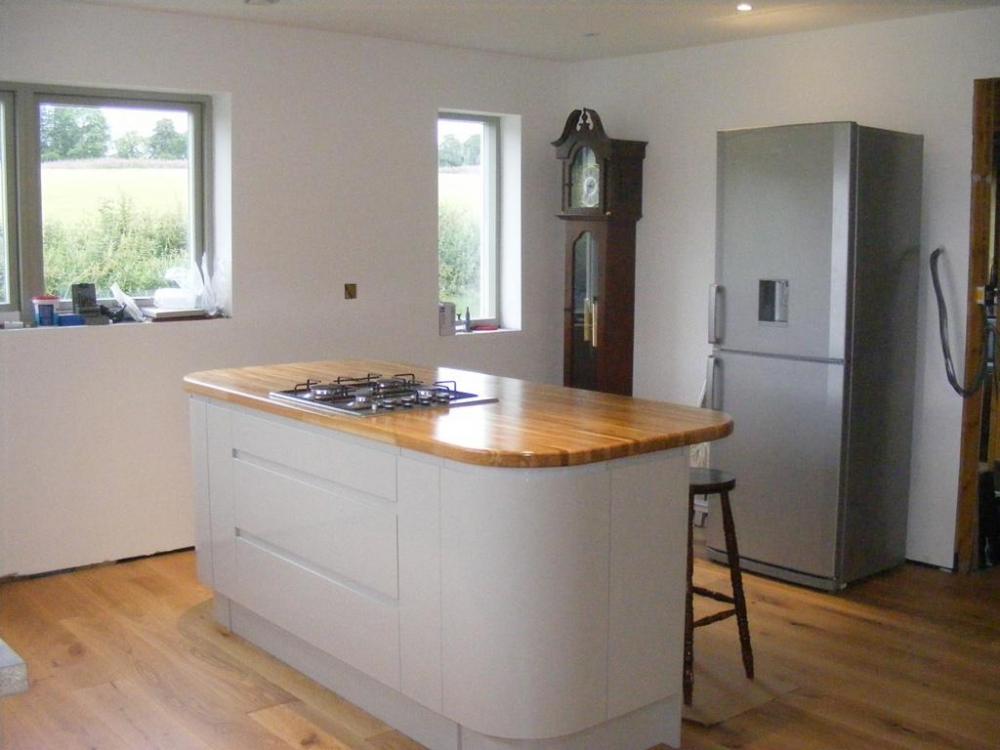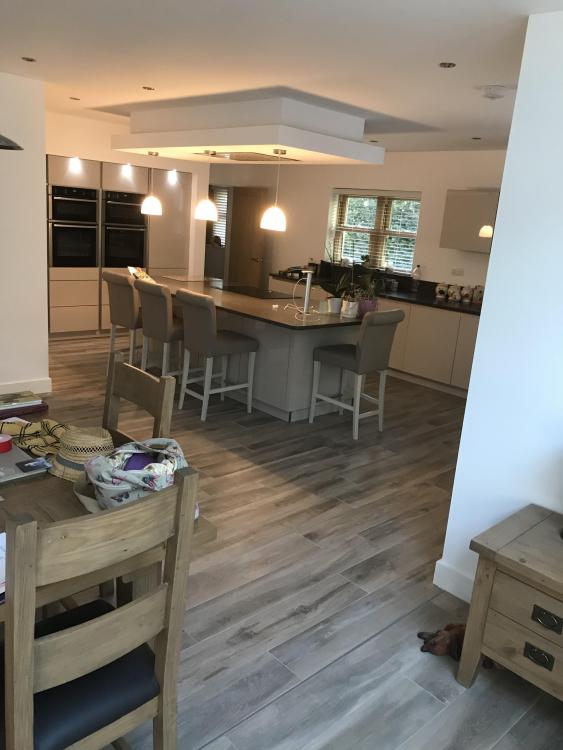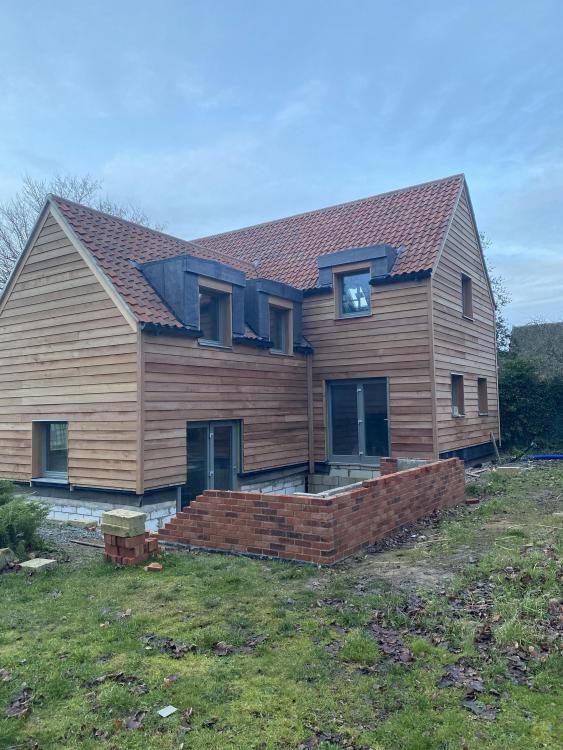Leaderboard
Popular Content
Showing content with the highest reputation on 12/18/19 in all areas
-
2 points
-
source: XKCD https://xkcd.com/927/2 points
-
I'm just using Aico's wireless test button and relay interface for the same kind of functionality. Smoke will kill power the the MVHR *and* an emergency light on the same circuit, but a CO problem will Boost the MVHR.2 points
-
I've DIY'd three charge point installations now, including building the charge points themselves. The OLEV grant only applies to "smart" charge point installations, and like all subsidies it seems that the installers are absorbing the grant money as a bit of additional profit. The grant is 75% of the installed cost up to a maximum grant of £500, and guess what? No installers claim less than the full £500... There are a few charge points around for ~£200 to £250 or so that work just fine. On top of that there will be the cost of a run of 6mm² cable (maybe 10mm² if it's a long distance), plus an enclosure with a Type A RCBO, a couple of henlys and lengths of tails cable. Not wise to connect a charge point to a spare way in an CU, IMHO, as it will draw 32 A for several hours on end, and things may get a bit warm in there. Another thing to consider is whether you want to install a tethered charge point or a non-tethered one. Tethered ones are easier to use, just unhook the cable and plug in, but they look a bit uglier, as there will be a few metres of hefty cable coiled up around the thing. A socketed unit means getting the lead out of the car every time you want to charge, and plugging it in both ends, but does tend to look a bit neater. Personally I'm not a fan of smart charge points, for a few reasons. Firstly, on a point of principle I object to data being collected about my car charging habits, for several reasons, not least of which being that a failure to charge for a few days would be a reliable indicator that I'm not at home. Secondly, users of various makes of smart chargers are reporting that, like pretty much all app controlled kit, reliability can be a bit flaky. Tales about of cars not charging as expected, charge rates being randomly reduced, user interfaces falling over and some charge points refusing to play nicely with some devices. The bottom line is that a charge point is just a switched power outlet, and doesn't need anything other than a means to turn it on and off. I prefer being able to do this easily and reliably with a switch, as it then needs no 'phone, internet connectivity, sanction by whatever authority controls the smart features, etc in order to work. I want to be sure that my car charges when I want it to, not when someone else decides I'm allowed to.2 points
-
1 point
-
1 point
-
Speaking as someone whose MVHR was broken down for a few weeks in a highly insulated and air tight house (0.25 ac/h) I strongly disagree on the ventilation aspect. You've also largely ignored the HR part of MVHR. My MVHR is now fixed and I'm very pleased.1 point
-
This came through today and offer ends Sunday. I certainly liked watching the video's. its quite expensive after that tho. Here's the link. https://hphhub.com/register/monthly-membership-hub/?coupon=7VXNV7CRV2 From Ben Adam-Smith. I'm doing something that I've never done before. I'm giving you the chance to road test our membership community The Hub. So I'm offering a 14-day trial for just £1! Simply click here to get started. Unsubscribe at any time within the 14 days and we'll say no more. But we're hoping you'll see the benefits of being a Hub member and want to stay on. This offer is only available until the end of Sunday, so take advantage today! And if you have any questions in the meantime, please let me know. Merry Christmas! Kind regards, Ben Adam-Smith HOUSE PLANNING HELP - THE HUB1 point
-
1 point
-
Make sure you see the colour “in the flesh “ natural light etc, we picked colours on an iPad and Gosh it was so different to what we thought (luckily it looks ok ?).1 point
-
1 point
-
FYI Jackson are only one supplier, all you really need is suitably dense/thick (e.g. 30-35mm) tongue and grove boards that are treated for external use.1 point
-
You’re not comparing like with like when looking at what is happening in the other rooms. There are several variables at play here including: 1. the windows are different (and potentially better) 2. the orientation of the windows may be different 3. there is no heating in the room currently 4. Wales is cold and damp currently 5. You live next to a stream and you’ve said that the area is damp several times (see one of your quotes below) “the most pressing issue here: the area is -extremely- damp, I mean you get your (dry) post & it feels limp/ moisture laden. Constantly (bar this weird summer). Clothes always feel never quite dry.. you just get used to it, affected my lungs to begin with, but it is extreme. My Howden's back door -mdf clad in 1mm veneer, then coated copiously by me- bowed in a few months“ No one can tell you whether when you heat the room the condensation will reduce, but no one is surprised that it is happening either. You’ll need to wait and see but given where you live you are where you are, quite literally.1 point
-
o.k @readiescards on the assumption that you have to have the fan room doors open to get ventilation to the fan room, here are my suggestions. These are also given on the basis that rooms affected by the noise of the stables are the ones furthest to the side with the fan. I would carry out these suggestions in stages to see the affect, as some are more involves with cost implications, in order. 1) Put an acoustic barrier as close to the fan room as possible, such as below, and can be built off the barn entrance upright steel. The height and extent of the barrier should be as much as possible, but given the noise source it should be as high as possible, but a minimum of 3m. In terms of the construction, because of the amount of low frequency sound it is kicking out the barrier needs to be pretty dense. So i would recommend a mass barrier such as an interlocking timber screen, e.g.https://www.jacksons-security.co.uk/acoustic-security-barriers/reflective-acoustic-barrier. With that barrier in place there should be a 1-1.2m gap to the fan room which would likely be enough to give antiquate ventilation 2) if you want to control noise from within the fan room breaking out, the barrier will help a bit, but if the barrier isn't working as well as you want it to and its the noise from the fan room itself rather than the fan extract. i would make up some acoustic absorbers to reduce the ambient noise levels in the fan room before it breaks out. As its an agricultural setting you can get away with an agricultural solution. Make up wooden frames which are min 80-100mm deep, and say 1m by 600m frames, and within the frames, put 100mm (or deeper) mineral wool / porous insulation (24 kg/m3), and hold in place with chicken wire each side of the frame. The number of absorbers will depend on the space available, but the more the better. If the frames are located with a cavity / space behind them onto the wall (e.g. 50 - 100mm) this will improve the low frequency performance of them. This will quieten up the noise within the fan room and break out from this space, but won't do much for the noise direct from the fan extract. 3) if that is not good enough, you may need to look to put a silencer on that extract (?) fan, where the ducting from the fan is taken up, over the roof and discharged away from the stables. You are probably looking at a rectangular silencer of 1.2 - 2.4m in length, and ideally place directly on the extract (?) of the fan. The silencer can be put on top of the roof, but you may need to account for this when you put in the acoustic barrier so that anything on the roof is shielded by the barrier.1 point
-
A couple of points: I have noticed that grass above a French drain can die off in summer. I have also noticed that Terram membrane is not very free draining and the pores can get clogged with silty clay, making it behave more like polythene.1 point
-
piccies would help. is there line-of-sight in through either outlets or inlets to the fan/fan room? Ensuring there's no straight-line for the sound to travel on is a good start, a foam lined baffle of some kind would work for this A dodgy fan would certainly need addressing beyond this, yes, absorbant lining of the fan house (especially with proper mass-loaded stuff) would be next...1 point
-
Isolate the power first ffs! I really wouldn't recommend the dope fiends idea of covering the motor in foam. Recipe for overheat and failure that is. Also makes maintenance a bitch. His was a plastic encased inline fan. I think he put a bin liner over it first then surrounded by the box and foamed.1 point
-
O.k, probably something I can help with.... - Have you got any pictures of inside the fan room? - any pictures of the space between the fan room and housem - do the residents complain about the noise in all rooms of the house, or just a couple? - how is the fan room ventilated? - do you know the make model of the dryer? - what is the construction of the fan room and door? Edit: just watched the video, that is loud! Is it the same now as then?1 point
-
I know very little about sound, but have you recorded it and then had a look at the wave forms. There may be a possibility to dampen out some of the worst frequencies. Also how about active noise cancellation.1 point
-
It sounds like they are trying to reduce/limit the size of accumulator tank(s) needed by specifying a larger pump to help with the refill time? What's the biggest pressurised tank you can get? If I've understood correctly.. They suggest an accumulator of 80L per person so for a four person house they are suggesting a 320L accumulator. They recommend a pump capable of 2 cubic meters per hour but that's only 33 litres per min which isn't that huge. If someone runs a 100L bath from the accumulator it would take just over 3 mins to put 100L back into it. Its like they are saying a 33 L/Min pump will cope with the demand most of the time and the accumulator just deals with unusual cases. Eg Bath, shower and appliances all at once. I don't know if that's better than a smaller pump and larger accumulator. I think their way the pump duty cycle is lower so perhaps the pump lives longer? Also the level in the accumulator probably stays within a narrower range if that matters?1 point
-
I missed this bit - cheaper to buy direct from the manufacturer in Bulgaria e.g. the Shelly 1PM is ~£12.75 + £4 P&P bought direct compared to the £23.49 via Amazon. I know they've got some delivery issues at the moment though as I think they're still catching up with Black Friday sales and getting caught up in Christmas post issues (I think I read they're shipping a thousand devices a day at the moment).1 point
-
We should probably take this to another thread in another sub-forum (is a moderator able to cut this diversion off an dump it in a new thread?) but my knowledge will be largely exhausted in one post anyway... Yes - if you wanted to manually control them without Internet/cloud access you'd just access them on, say, http://192.168.1.231/, http://192.168.1.232 etc and they'd give a basic - but functional - web interface (without the fancy images that are served up from the cloud to the smartphone app / 'full fat' web browser experience). Yes, they act standalone - the app/cloud/web interface just brings them all into one control panel and adds additional functionality that couldn't be done standalone (e.g. schedules based on sunset/sunrise which requires an Internet connection to determine each day) and allows interaction between them e.g. an action on one device can trigger something on another. Yes, very cheap. Made in Europe (by Allterco Robotics in Bulgaria) and some devices are UL certified so gives some confidence about their use despite the cost. They are open platforms too so can be reflashed with 3rd party firmware if desired. I've got a Shelly 1PM controlling power to the MVHR (and smoke alarm interaction), a Shelly 1 running on 12v acting as a 'smart' boost trigger (for a future project) and a Shelly 2.5 controlling a couple of outdoor lighting circuits. They sell a dedicated 'humidity and temperature' device that I haven't tried, and they are currently developing an interface for the smart relays like mine so that you can plug 1-wire sensors into them. They also do a battery-powered flood detector which could be useful. Do it! I bought my first one (the Shelly 2.5 that I've connected to my outside lights) more out of curiosity and because I was after a dusk-to-dawn timer anyway so figured I could try one with 'added features' for giggles. Whilst I thought the novelty would wear off I've actually been very impressed by the responsiveness, reliability and continuous product development that I've now got three and expect to buy a bunch more where needs arise. There is some limited customisation with the GUI in terms of changing names, uploading photos etc: I know others have used 3rd party offerings like Home Assistant, OpenHAB etc to take things to the next level but it's not something I've got any experience of. I've got an extension to finish and a 2.5yr old daughter to fill my time before I get chance to go down that avenue!1 point
-
Went with Gaulhofer 91 inline after a bidding war between them and Internorm (well, their UK distributors). Did a lot of quotes and research to find the cost vs. quality point I was happy with, then made sure I had two comparable quotes to get that bidding war started1 point
-
1 point
-
The cause of the mildew and mould is warmer moist air condensing on the cold surfaces quicker than it evaporates. You may find a dehumidifier could help.1 point
-
I like threads that show the outcome, so here go's....I actually bought the stainless threaded bar, and then luckily found a supplier who had 400mm concrete insulation anchors or whatever you call them. (Thanks @Nethermoor) Then I put up some Aluminum track (secured with 150mm concrete screws) There are some metal C-sections running through the panels, so I could use 200mm Timco screws to get into them with a washer I put a heap of concrete fixings in around the esges above the next morning and forgot to take a picture. The final job, good enough for the plaster's to take care of I used Tec7/CT1 on the top layer, and then got my hands on some base coat adhesive to stick the final layer on , you can see a bit spilling over the edges. Thanks everyone for your advise1 point
-
I've been told 10m although I know folks on here have done (considerably?) longer. Also an important question is how much of the run is outside the thermal envelope - I understand split system will be better for situations where the pipe doesn't immediately come into the heated space.1 point
-
@Nickfromwales, if you are iPad-proficient, consider Morpholio Trace and just import a set of plumbing symbols to you liking. With it you can just overly a PDF of the client's floorpan (or any pdf template) with lines and symbols as you like, and share easily. Its a superb app and getting a lot of buzz. https://www.morpholioapps.com/trace/1 point
-
How bad is it? Will the thing be uninhabitable? Or can the grain dryer run during the day when they will be out (suspect you need the 24x7 ability just in case)? Can you use those weeks as "medium" not "high" season at say 25% less rent, or for "friends and family" at a smaller or nominal charge (which may help you with the availability / occupancy requirements ti to get the tax concessions - others will be better on these than me). Solid chunky wooden fences may be an option for reflecting sound, at perhaps 1/3 the cost of a wall, but the whole thing is a bit of a black art. Or well sealed secondary glazing (or thicker units) is good for sound deadening with a larger air gap of 100mm or so. Ferdinand1 point
-
I'm a bit confused, this thread is only 17Hrs old and is one page. Never mind, lets move on. It's not important.0 points
-
0 points
-
0 points
This leaderboard is set to London/GMT+01:00




















